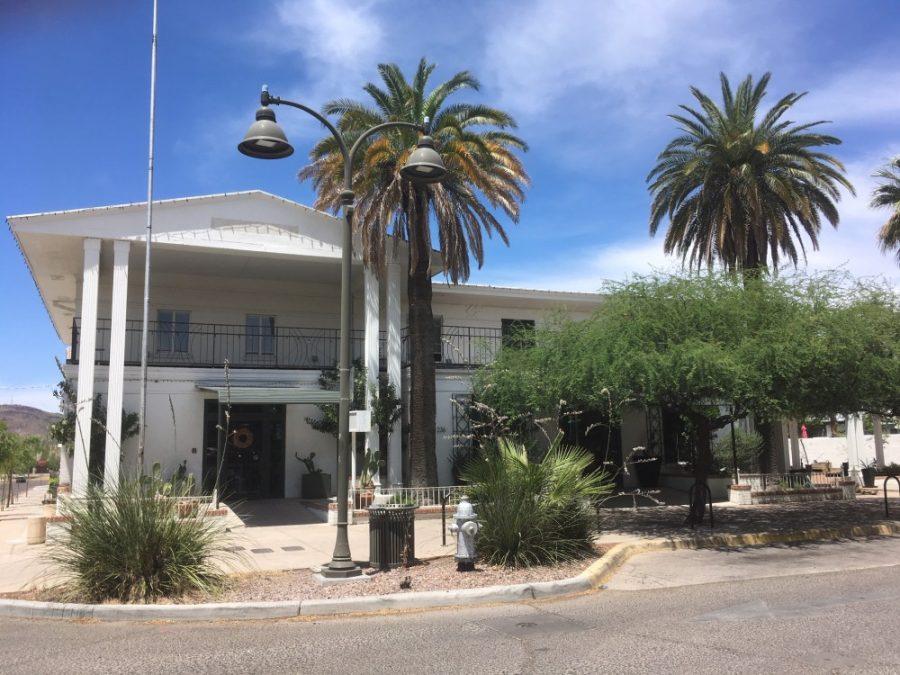Clark Norton, the author behind “100 Things to Do in Tucson Before You Die,” had his new book “Secret Tucson: A Guide to the Weird, Wonderful, and Obscure” published on Sep. 15. Throughout Norton’s five years in Tucson, he claims to have found hundreds of mysterious things that locals and visitors have most likely never heard of.
His new book “Secret Tucson: A Guide to the Weird, Wonderful, and Obscure” is available at local bookstores and on Amazon.com Inc. He also publishes his travel articles on his website.
The Daily Wildcat spoke with him to discuss his book and the discovery of secret things in Tucson.
Daily Wildcat: Why did you decide to be a travel writer?
Clark Norton: I’ve been a travel writer for quite some time. I wrote my first guidebook, which was a guidebook about traveling to California with kids. I’ve always been a writer and I’ve always wanted to travel. It made perfect sense to combine the two.
I’ve done other types of writing as well, like magazine writing, screenwriting, investigative reporting, a lot of different things, but when I really got down to it, what I really loved was travel and writing about travel.
RELATED: Revisit Tucson’s History at Old Town Artisans
DW: How different is your new book, “Secret Tucson: A Guide to the Weird, Wonderful, and Obscure,” from your other book, “100 Things to Do in Tucson Before You Die”?
CN: It’s quite different. “100 things to do in Tucson” has a lot of unusual things and a lot of the better things to do. It’s more like a checklist for people who live here or visitors. “Secret Tucson” really, sort of, peels the onion about Tucson. It’s like taking a backstage tour of the city.
It deals with a lot of things that are lesser known here. A lot of the history behind things that you might’ve seen a lot of when you travel around the city, you may have seen this or that, but you didn’t know what stood behind it or what makes it so interesting.
DW: Why did you decide to write this book?
CN: Actually, my publisher asked me to write it. I was intrigued the moment I heard the idea as a relative newcomer myself. I was quite interested in finding out more about the things that were going on in the city and more about the lesser known parts of the city. Especially after writing my first book for 100 things, I got really intrigued by Tucson and all the things that there are to do here.
It was quite interesting, when I was writing the first book, how many people told me “Oh, there’s nothing to do in Tucson. You’ll never find 100 things to do.” But I found 150 things and I had to cut 50 out and I was able to use a number of those in Secret Tucson.
RELATED: OPINION: Hidden treasures the UA offers for FREE
DW: How much research went into this book?
CN: I did a huge amount of research. I started out by asking everybody I knew and people I didn’t know about ideas or suggestions they had, and of course I did a lot of internet research.
I found that when I was researching, often one thing would lead to another. For example, I went to Mission Garden, which traces the history of Tucson agriculture for over 4,000 years. Going to Mission Gardens that day, there was a demonstration of Hohokam spear throwing and I discovered that there were Hohokam ballcourts in Catalina State Park.
I also learned about a place called Native Seeds/SEARCH, which preserve a lot of the native seeds of Arizona and has a retail store where you can go in and buy seeds to plant and make a local garden.
I just found it fascinating that as I was out researching one thing, something else would come up.
DW: What was the most interesting thing that you found?
CN: Well, there was so much that was interesting. Actually, on the UA campus, I love the [UA] History of Pharmacy Museum. That was fascinating because there were lots of old-time pharmaceuticals made from heroin extracts and cocaine and opium, things that you wouldn’t expect to find these days on a pharmacy shelf. They also have a recreation of an old-time pharmacy, which I find just fascinating.
Follow Karyme Cuadras on Twitter















